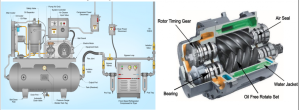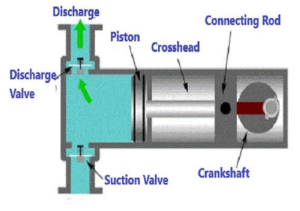In the last issue of our technical bulletin, we discussed the Membrane Patch Calorimetry (MPC) test, one of the most common tests for varnish potential. In this issue, we will discuss the Quantitative Spectrophotometric Analysis (QSA) and Ultracentrifuge tests.
The Quantitative Spectrophotometric Analysis (QSA) Test
Apart from the MPC test, the most common varnish detection test is the QSA test. Technically the MPC and QSA tests are essentially the same. The main difference being that the QSA test was developed and trademarked by Bureau Veritas. Therefore, the analysis of the MPC test provided in the last issue is equally applicable to this test.
Similar to the MPC test, the QSA testing procedure begins with a 72 hour room temperature aging process that enables insoluble and some soluble impurities to agglomerate. Next, the sample is mixed with a petroleum ether to isolate and agglomerate insoluble by-product material. Then, using a 0.45-micron membrane, a separation process extracts the varnish-forming insoluble degradation by-products and concludes with a quantitative measurement of the isolated contaminant. The concentration of the contaminant correlates directly to the varnish potential of the fluid. A rating of 1 (no varnish) to 100 (severe fouling) indicates the propensity of the lubricant to form sludge and varnish.
The Ultracentrifuge Test
A small amount of oil in a test tube is placed in an ultra centrifuge. The sample is subjected to 17,000 RPM for 30min. By subjecting the sample to G-forces, large molecules are forced to the bottom of the centrifuge where they form solid deposits. This includes oil-degraded insoluble contaminants that are too small to be detected by normal particle counting or be removed with mechanical filters. The density of the agglomerated material is compared to a rating scale to obtain the UC value (1 to 8).
One of the limitations of the ultracentrifuge test is that additives such as VI improvers, dispersants and sulfonates can be removed during the testing procedure and contribute to the UC profile. While the MPC/QSA have generally shown better sensitivity to varnish formation, the ultracentrifuge test can augment the results of these tests to provide a more detailed contamination profile.
Other Tests
Since varnish is largely composed of oil degraded insoluble materials, tests which monitor additive levels and oxidation of the oil can be helpfully in identifying trends which may lead to future varnish potential. These tests include the Rotating Pressure Vessel Oxidation Test (RPVOT), Linear Sweep Voltammetry (RULER), Acid Number (AN) and FTIR spectroscopy.

Lubri-Con Ltd. can supply advanced Annual Turbine Oil Analysis using our expert contracted oil laboratories in the USA. Equipped with the latest laboratory and communications technology, we can provide used oil analysis test results for a variety of equipment. Our comprehensive reporting on analytical data assists in the planning of effective maintenance schedules and can provide an early warning of potential operating problems and/or lubrication failure.
Annual Turbine Oil Analysis Test Package
- Color (ASTM D1500)
- Demusibility (ASTM D1401)
- Foam Seq 1 (ASTM D895)
- FTIR (JOAP Method)
- Karl Fischer (ASTM D6304)
- Membrane Patch Colorimetry (MPC)
- Particle Count (ISO 4406-99)
- Rotating Pressure Vessel Oxidation (ASTM D2272)
- Ruler
- Rust (ASTM D665A)
- Spectrochemical Analysis (ASTM D5185)
- Acid Number (ASTM D974)
- Ultra Centrigue
Industrial Basic Test Package
- Spectrometric Analysis
- Viscosity @ 40 degree Celsius or 100 degree Celsius
- Acid Number
- Oxidation & Nitration
Industrial Premium Test Package
- Spectrometric Analysis
- Water by Karl Fisher
- Viscosity @ 40 degree Celsius
- Acid Number
- Particle Count with ISO Cleanliness
- Oxidation & Nitration
Diesel Engine Test Package
- Spectrometric Analysis
- Viscosity @ 100 degree Celsius
- Base Number
- Fuel/Glycol by FTIR
- Oxidation & Nitration





